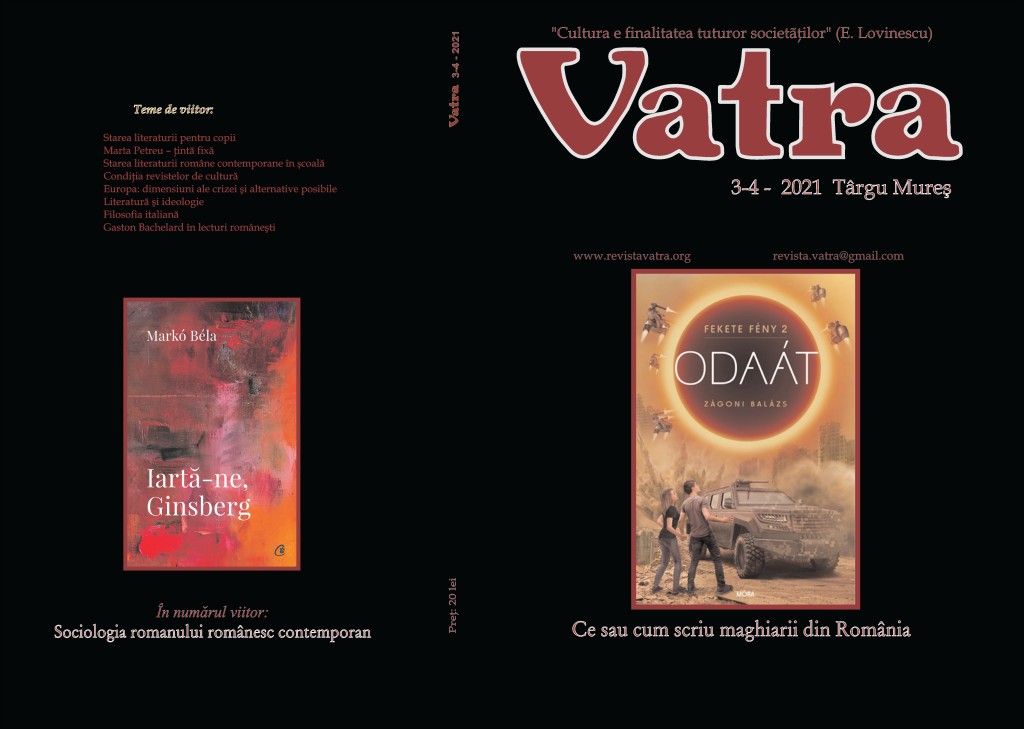
Ce sau cum scriu maghiarii din România
This section contains the thematic part of the issue, a group of literary texts written by Hungarian writers from Romania and theoreticl studies, written by Romanian critics.
More...We kindly inform you that, as long as the subject affiliation of our 300.000+ articles is in progress, you might get unsufficient or no results on your third level or second level search. In this case, please broaden your search criteria.

This section contains the thematic part of the issue, a group of literary texts written by Hungarian writers from Romania and theoreticl studies, written by Romanian critics.
More...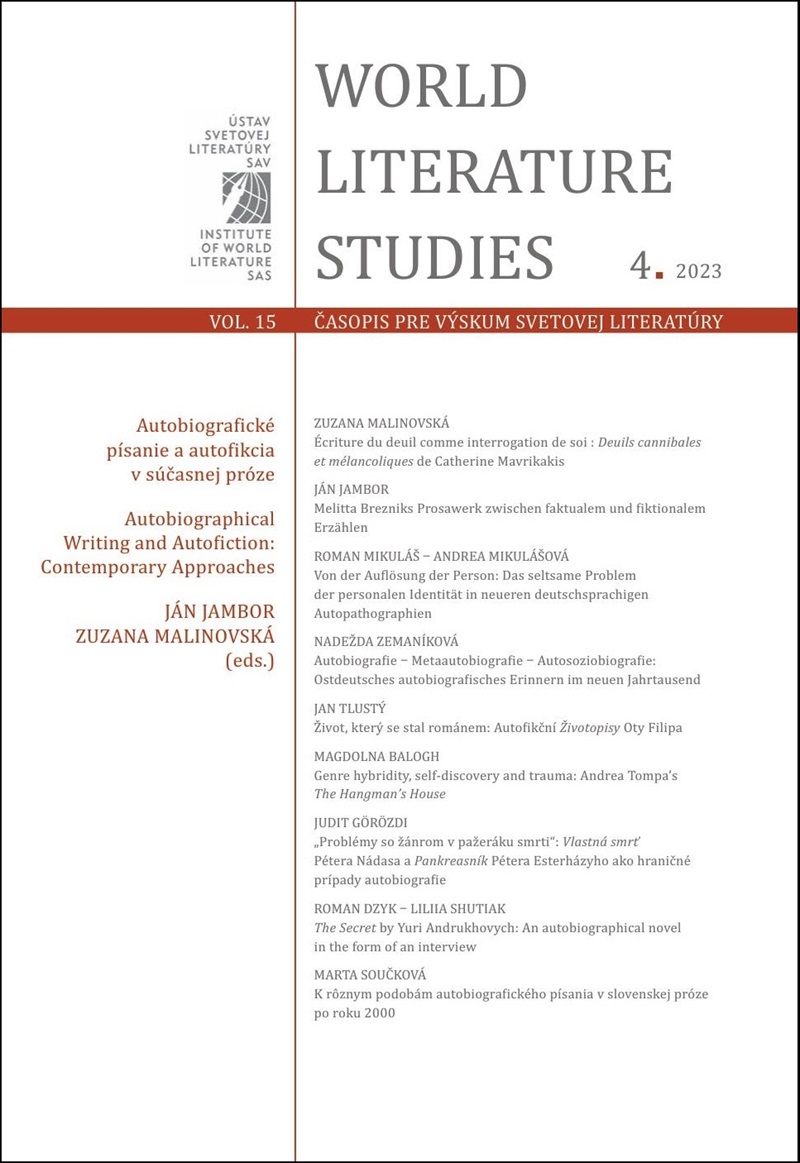
Texts that attempt to mediate the author’s own experience with death illuminate the basic problem of autobiographical writing: the impossibility of fully verbalizing an authentic experience and the limits of relatability of such an experience through language. The article focuses on two works by contemporary Hungarian writers that thematize the specificity of an autobiography written at the final point of a life’s journey. Saját halál (2004; Eng. trans. Own death, 2006) by Péter Nádas (b. 1942) relates the experience with clinical death, while Hasnyálmirigynapló (2016; Eng.trans. „Pancreatic Diary (Excerpts)“, 2017) by the late Péter Esterházy (1950–2016) documents the author’s process of dying. Based on the idea that autobiography not only restores the face and the experience of the author but also transforms it (Paul de Man), the article investigate show autobiographical text restores and deprives/disfigures the author’s own experience with death. Simultaneously it considers the interdiscursive meaning of these (autobiographical) testimonies.
More...
A serie of short stories by Imre Wirth.
More...



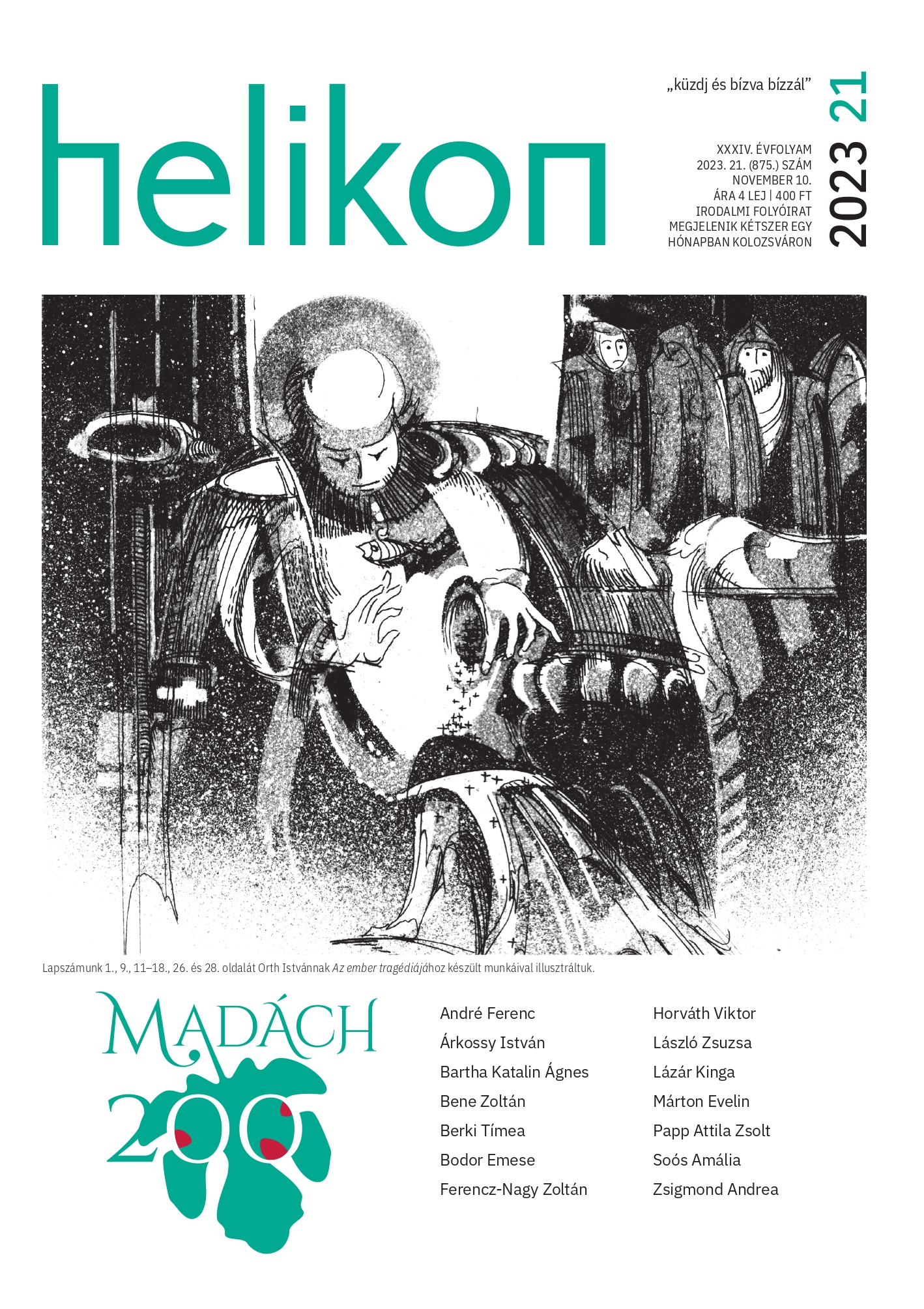


Katalin Ágnes Bartha's article on the premiere of The Tragedy of Man in Cluj Napoca.
More...
Tímea Berki's article on the reception of Imre Madách in Romania.
More...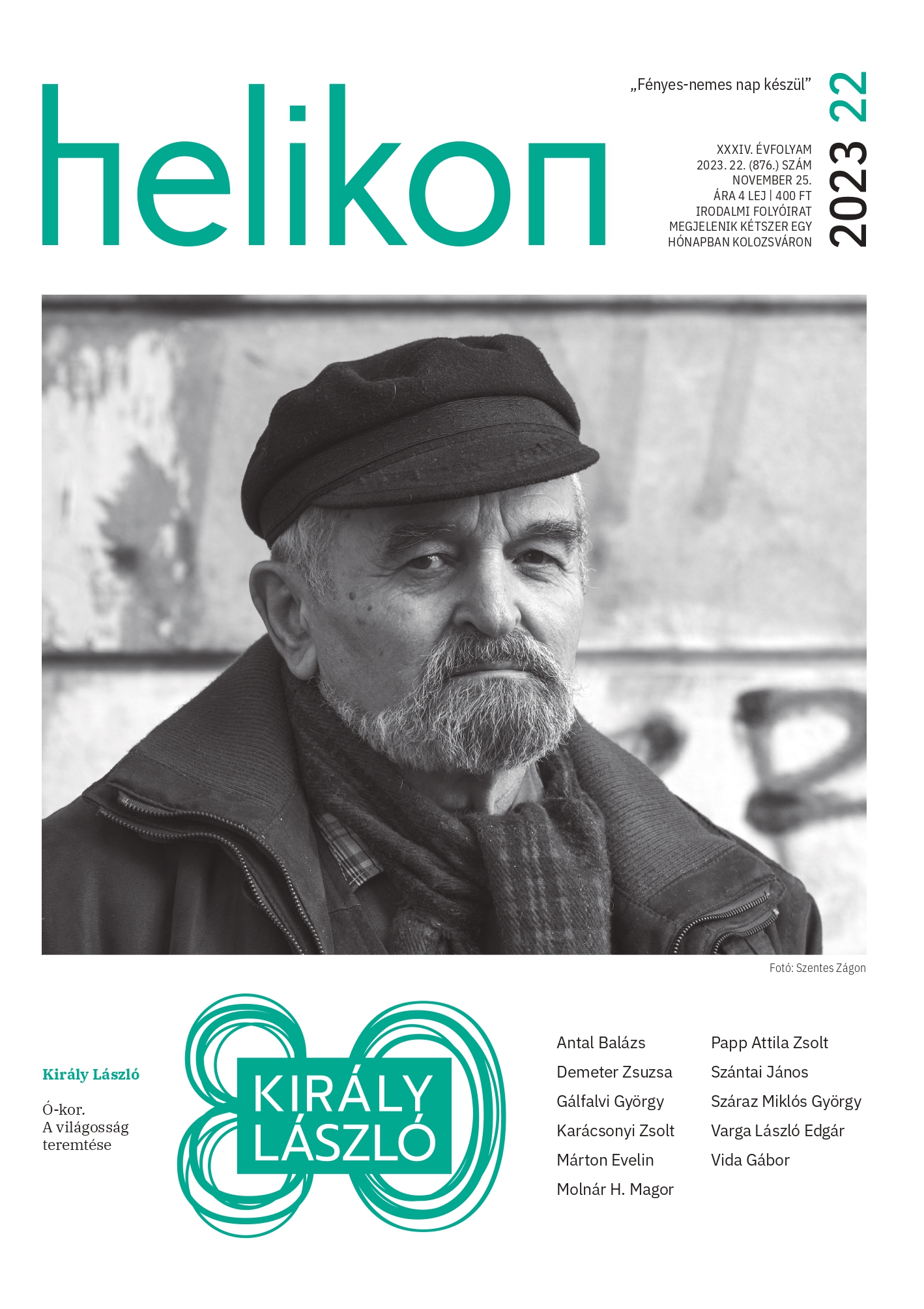
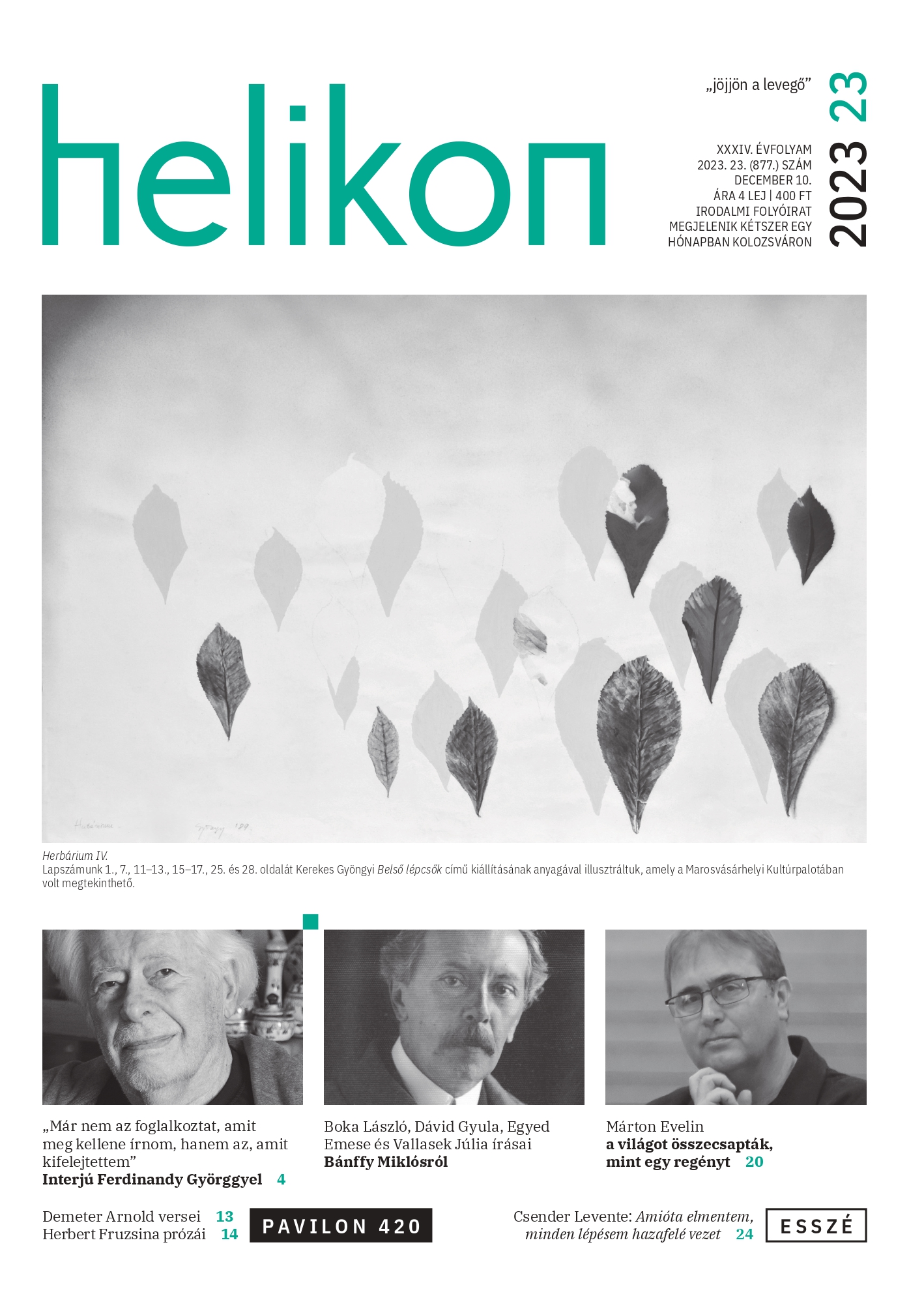

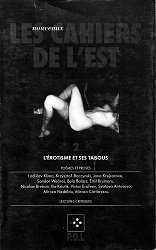


The article takes a historical approach to the phenomenon of Hungarian literature in Czechoslovakia and Slovakia. As a result of peace treaties ending the First World War not only new states, but also new literatures appeared on the map of Europe. Hungarian authors of the former Austria-Hungary started to write a completely new literature in a completely new state which required a completely new terminology as well. This article tries to shed light on key factors that shaped this literature and the identity of its authors, as well as on issues that preoccupied literary scholars from its early years to the present days. Since the article was based on source texts in Hungarian language that are not accessible in other languages, it can be also considered as a short summary and overview of Hungarian literature written in Czechoslovakia and Slovakia and the space for introducing its most relevant literary scholars, literary historians, and their most important theoretical and historical works on this phenomenon. In this way, it can also provide a starting point for further research.
More...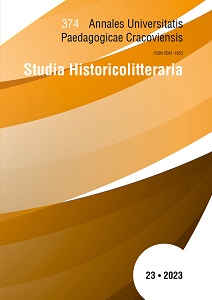
The main idea of the article is the description of selected works which belong to the latest Hungarian historical novels. They are surprising for readers and at the same time constitute a polemic with the genre classics. The best known historical novelists ate the turn of the 19th and 20th centuries in Hungary are: Géza Gárdonyi and Maurycy Jókai. One of the reasons for their popularity is the fact that in their works they mentioned well known and at the same time painful events from the history of Hungary. It was the era of Turkish rule and the period of the Hungarian Spring of Nations. Other events included the Trianon case, which wasn’t discussed between 1945–1989, the Second World War, and the Hungarian October. The mythic image of national struggle and the fighting Hungarian, which was shaped by Romantic writers, was preserved for a long time in the collective memory of Hungarians. It seemed to have become an indispensable element of national mythology. However, new authors appeared in contemporary Hungarian culture, who made an attempt at the demythification of events that were important for the Hungarian people. Such an attempt seems very interesting and controversial. It is a litmus test for the current state of the collective historical awareness of the nation. New literary works take a different approach to those events which are well known to several generations of Hungarians from classical literature. They ask questions about the borders concerning rooted axiological categories and the flexibility of historical thinking. They are also an attempt at a timeless reflection connecting different periods. In Béla Fehér’s book, which was written in the spirit of magical realism, the most popular leader of the Hungarian Spring of Nations – Lajos Kossuth (1802–1894) – quotes the words of Prime Minister Imre Nagy (1896–1958) from the days of the Hungarian October. As for the works which deal with the topic of the two World Wars, they pose questions about the moral value of struggles run on the wrong side in the interest of foreign powers.
More...
The main purpose of the article is to present the literary output of Andrea Tompa, using her debut collection entitled Dom kata as an example. In her work, the Hungarian writer uses her creative potential connected with the experiences of growing up in a discriminated national minority in Romania in the 1980s. In the paper, I demonstrate how the history of the area and biography intertwine in the literary transformation of experience in a quasi autobiographical story about entering adulthood. In Andrea Tompa’s work, one can see how the geo cultural experience has an impact on both the way the story is constructed and the narrative strategies applied, as well as its influence on the reception of the work among readers. The trauma of the regime and exclusion associated with Romania in the second half of the 20th century is conveyed by means of a hybrid form and fragmented narratives. This unique combination that makes up the book of the Hungarian writer provides an inspiring material for literary research, both from the perspective of memory studies and the poetics of experience. As for the way of constructing the story, which is hard to categorize according to strict genre classifications, it only enlivens the reception.
More...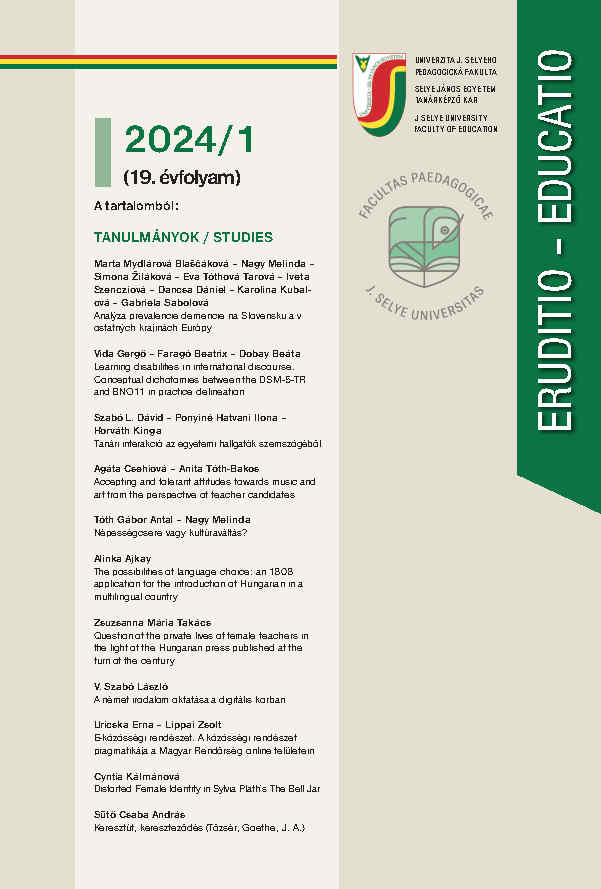
At the turn of the 18th and 19th centuries, Hungary was characterised by ethnic diversity. Nevertheless, for a long time there was no sign of this causing any particular tension. The language of everyday life was characterised by pragmatism, and the language of public life, education and science was uniformly Latin. Joseph II’s language decree of 1784 (which made German the official language instead of Latin) started the process that would culminate in the language decree of 1844, which made Hungarian the official language. In the first decade of the 19th century, there was a revival of the language issue, with the publication of a series of documents on the language. At the Diet of 1807, there were such heated debates about the language that the Viennese court and the secret police thought it would be a good idea to hold a competition to see whether Hungarian was suitable for official use in Hungary. 21 contributions were received for this competition. Almost half of the applicants were from Upper Hungary, all of them Protestants, most of them pastors. They were the founders of one of the earliest scientific-literary societies, Solennia, in 1808. The works of the society’s members were published every year in the journal Solennia, which was published in four languages (Latin, Hungarian, German, Slovak).
More...